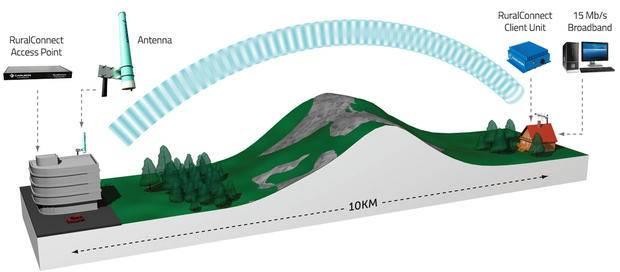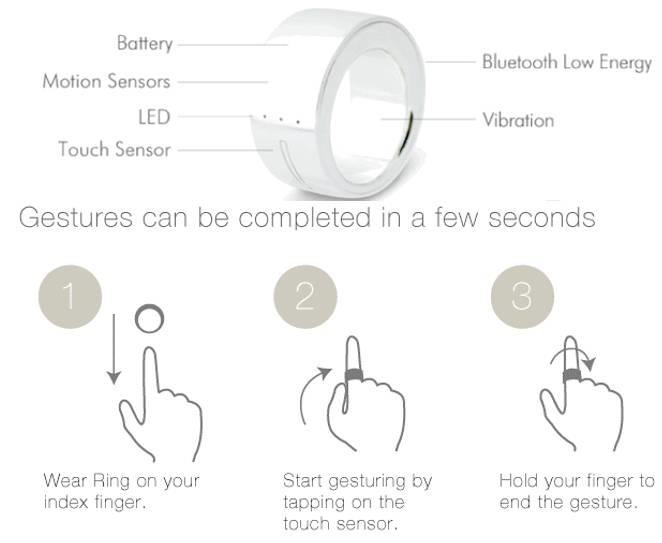RECENT DEVELOPMENTS
1. Higgs Boson
- The Higgs is the last missing place of the Standard Model, the theory that describes the basic building blocks of
- The other 11 particles predicated by the model have been found and finding the Higgs would validate the
- According to the theory, Higgs boson was the agent that made the stars, planets – and life – possible by giving mass to most elementary particles, the building blocks of the universe, hence the nickname “God Particle”.
2. Stem Cells
- Stem cells are the “master cells”that can transform into a variety of more specialised cells required in the
- The embryonic stem cells the team tried and failed with were at a developmental stage known an “pluripotency”.
- This means they can transform into any issue type in the body, but cannot turn into the placenta or an entire
3. IRNSS
- The Indian Regional Navigation Satellite System (IRNSS) is an autonomous regional satellite navigation system being developed by the Indian Space Research Organisation (ISRO) which would be under complete control of the Indian
- The requirement of such a navigation system is driven by the fact that access to foreign government-controlled global navigation satellite systems is not guaranteed in hostile
- The IRNSS would provide two services, with the Standard Positioning Service open for civilian use and the Restricted Service, encrypted one, for authorised users (military).
4. Cryonixs
- Cryonics is the low-temperature preservation of humans who cannot be sustained by contemporary medicine, with the hope that healing and resuscitation may be possible in the
- Cryopreservation of people or large animals is not reversible with current
- The stated rationale for cryonics is that people who are considered dead by current legal or medical definitions may not necessarily be dead according to the more stringent information-theoretic definition of
- It is proposed that cryopreserved people might someday be recovered by using highly advanced technology.
5. DNA computing
- DNA computing is a form of computing which uses DNA, biochemistry and molecular biology, instead of the traditional silicon-based computer
- DNA computing, or, more generally, biomolecular computing, is a fast developing interdisciplinary area. Research and development in this area concerns theory, experiments, and applications of DNA computing.
- The term “molectronics” has sometimes been used, but this term had already been used for an earlier technology, a then- unsuccessful rival of the first integrated circuits; this term has also been used more generally, for molecular-scale
6. Bionix eye
- A bionic eye mimics the function of the retina to restore sight for those with sever vision
- It uses a retinal implant connected to a video camera to convert images into electrical impulses that activate remaining retinal cells which then carry the signal back to the
7. Graphene
- Graphene is an állotrope’or a two dimensional form of carbon with atoms densely packed in a honeycomb fashion in a one – atom-thick sheet or layer.
- This work establishes that the new class of two-dimensional carbon nanomaterials has enormous potential in water purification, in creating cheap, easily manufacturable
- The material is also attractive due to its high specificity to the pesticides and insensitivity to changes in pH values of water and less toxicity than
- Besides, reduced grapheme oxide can be easily immobilized on cheap substrates like sand and used as a
- The anti-bacterial properties of grapheme means bacteria is unlikely to accumulate on teh filter media using
8. Venus Express
- Venus Express is European Space Agency’s (ESA’s) first mission to Earth’s nearest planetary neighbour, Venus.
- The mission was born in March 2001
- Out of a number oif promising proposals, ESA selected venus Express.
- What made the mission especially attractive was that many of the spare instruments developed for ESA’s Mars Express and Rosetta missions could be used to achieve Venus Express’s science objectives, which were to study the atmosphere in great
9. Antimatter
- In particle phuysics, antimatter is material composed of antiparticies, which have the same mass as particles of ordinary matter but have opposite charge and quantum spin.
- Antiparticies bind with each other to form antimatter in the same way that normal particies bind to form normal
- For example, a positron (the antiparticle of the electron, with symbol e+) and an antiproton (symbol p) can form an antihydrogen atom
- Furthermore, mixing matter and anitimatter can lead to the annihilation of both, in the same way that mixing antiparticles and particles does, thus giving rise to high-energy photons (gamma rays) or other particle – antiparticle
- The ane result of antimatter meeing matter is a release of energy proportional to the mass as the mass-energy.
10. Noori
- The world’s first pashmina goat clone, produced in Kashmir, has been named Noori, an Arabic word referring to light, in Srinagar by a group of scientists and researchers. Funded by World Bank, the clone project was a jointly worked by Sher-i- Kashmir Agriculture University for Science and technology (SKAUST) and Karnal-based National Dairy Research Institute (NDRI).
13. Genonic imprinting
- Genomic imprinting is a genetic phenomenon by which certain genes are expressed in a parent- of-origin- specific manner.
- It is an inheritance process independent of teh classical Mendelian
- Imprinted alleles are silenced such that the genes are either expressed only from the non- imprinted allele inherited from the the mother, or in other instances from the non-imprinted allele inherited from the father
14. RFID
- RFID is the modern identification procedure which uses radio frequency.
- RFID will provide transparency in application including supply chain, logistics and equipment management. The benefits of visibility and fast identification provided by RFID technology especially in supply chain management (SCM) reduce the risk of
15. SQUID
- SQUID – Superconducting Quantum Interference
- A superconducting quantum interference device (SQUID) is a mechanism used to measure extremely weak signals, such as subtle changes in the human body’s electromagnetic energy field.
- Using a device called a Josephson junction, a SQUID can detect a change of energy as much as 100 billion times weaker than the electromagnetic energy that moves a compass
16. Nano – Ear
- The world’s smallest ear is a tiny piece of gold suspended in a laser beam.
- In can hear sounds a million times fainter than any human ear can, making it a powerful acoustic
- The setup is a progression from the 1986 development of so- called optical tweezers”, which use laser beams to trap microscopic particles inside the most powerful part of the electric field.
17. Insight
- It is NASA’s MARS Mission in 2016
- This mission called Ïnsight”will investigate why Mars crust is not divided into tectonic plates that drift like Earth’s.
18. Quasars
- A quasi-stellar radio source (quasar) is a very energetic and distant active galactic
- Quasars are extremely luminous and were first identified as being high redshift sources of electromagnetic energy, including radio waves and visible light, that were point-like similar to stars, rather than extended sources similar to
19. Neutron Stars
- Netron stars are a hyper-dense form of dead star composed almost entirely of
- A sub-class star is a star made entirely out of neutrons, as the name suggests.
- These are the remains of stars that had between 1.4 and 9 times the mass of our sun (solar masses).
20. Pulsars
- A pulsar is the same object as a neutron star, but with one added feature.
- A pulsar emits two very high- energy beams into space, concentrated along its magnetic axis.
- Pulsars (and neutron stars) spin very rapidly, most at about once every
21. Fertile Crescent
- The Fertile Crescent is a crescent, shaped region containing the comparatively moist and fertile land of otherwise arid and semi-arid Western Asia, and the Nile Valley and Nile Delta of northeast Africa.
- In current usage the Fertile Crescent has a minimum extent and a maximum
22. Grail Mission
- The Gravity Recovery and interior Laboratory (GRAIL) was an American lunar science
mission in NASA’s Discovery Program which used high- quality gravitational field mapping of the Moon to determine its interior structure.
23. Speckle Noise
- Speckle noise is a granular noise that inherently exists in and degrades the quality of the active radar and synthetic aperture radar (SAR)
- Speckel noise in conventional radar results from random fluctuations in the return signal from an object that is no bigger than a single image-processing element. It increases the mean grey level of a local
24. Photon Torpedo
- A photon torpedo was a projectile weapon commonly used by Federation
- The photon torpedo used shaped charges of antimatter that, when they came in contact with conventional matter or hard energy barriers, released massive amounts of gamma ray photons, hence the weapon’s
25. DNA Chip Technology
- DNA chip technology utilizes microscopic arrays (microarrays) of molecules immobilized on solid surfaces for biochemical analysis.
- Microarrays can be used for expression analysis, polymorphism detection, DNA resequencing, an genotyping on a genomic
26. Plasmons
- Plasmons are density waves of electrons, created when light hits the surface of a metal under precise
- These density waves are generated at optical frequencies, adn are very small and
27. IPV6
- Internet protocol (IP) is the set of techniques used by many hosts for transmitting data over the internet.
- Internet Protocol Version 6 (Pv6) is a network layer protocol that enables data communications over a packet switched
- The working standard for the IPV6 protocol was published by the Internet Engineering Task Force (IETF) in 1 The IETF specification for IPV6 is RFC 2460. IPV6 was intended to replace the widely internet Protocol Version 4 (IPV4) that is considered the backbone of the modern Internet.
- IPV6 is often referred to as the “next generation internet” because of its expanded capabilities and its growth through recent large scale deployments. In 2 Japan and Korea were acknowledged as having the first public deployments of IPv6.
28. Biological internet (Bi-Fi)
- Researchers from Stanford University are harnessing the key attributes of a virus ‘M13’to develop the first biological Internet or ‘Bi-Fi’ by creating a mechanism to send genetic messages from cell to
29. e-Nose (E-Sensing)
- An electronic nose is a device intended to detect odors or flavours. Over teh last decade, electronic sensing or ‘e- sensing’technologies have undergone important developments from a technical and commercial point of
- The expression electronic sensing’ refers to the capability of reproducing human senses using sensor arrays and pattern recognition
30. e-Tongue
- The electronic tongue is an instrument that measures and compares
- Chemical compounds responsible for tast are are detected by human taste receptors, adn the seven sensors of electronic instruments detect the same dissolved organic and inorganic compounds.
31. e-Textiles
- E-textiles, also known as electronic textiles or smart textiles, are fabrics that enable
computing, digital components, and electronics to be embedded in them.
- Part of the development of wearable technology, they are known as intelligent clothing or smart
32. Holography
- Holography is a technique which enables three dimensional images to be made.
- It involves the use of a laser, interference, diffraction, light intensity recording and suitable illumination of the
33. Swarm Robotics
- Swarm robotics is a new approach to the coordination of multirobot systems which consist of large numbers of mostly simple physical
34. Virtual Reality
- Virtual reality is a term that applies to computer – simulated environments that can simulate physical presence in places in the real world, as well as in imaginary
- The term artificial reality’was environments are primarily visual experiences, displayed either on a computer screen or through special stereoscopic displays, but some simulations include additional sensory information, such as sound through speakers or
35. Magnetic Refrigeration
- Magnetic refrigeration is a cooling technology based on ther magneto caloric effect.
- This technique can be used to attain extremely low termperatures, as well as the ranges used in common refrigerators, depending on the design of the
36. gTLD
- A generic Top-level domain (gTLD) is one of the categories of Top-level domains (TLDs) maintained by the internet Assigned Numbers Authority (IANA) for use int eh Domain Name System of the Internet. It is visible to internet users as the
suffix at theand of a domain name.
37. Botnet
- A botnet is a collection of computers, connected to the internet, that interact to accomplish some distributed task.
- Although such a collection of computers can be used for useful and constructive applications, the term botnet typically refers to such a system designed and used for illegal
38. Spambot
- A spambot is an automated computer program designed to assist in the sending of
- Spambots usually create fake accounts and send spam using them, although it would be obvious that a spambot is sending it.
- Some spambots, however, can crack passwords and send spam using other people’s
39. Cryonics
- Cryonics (meaning icy cold) is the low-temperature preservation of humans and animals who cannot be sustained by contemporary medicine, with the hope that healing and resuscitation may be possible in the
- Cryopreservation of people or large animals is not reversible with current
40. Human Connectome Project
- The Human Connectome Project is a five-year project sponsored by sixteen components of the National Institutes of Health (NIH), split between two consortia of research
- The project was launched in July 2009 as the first of three Grand Challenges of the NIH’s Blueprint for Neuroscience
41. Cyclebeads
- CycleBeads, a simple, inexpensive, non-clinical and easy-to-use natural family planning method, could well be the answer to the problem of burgeoning population of India –
the second most populous nation that recently welcomed the footfall of world’s seven billionth baby on its soil.
42. siRNA
- siRNA (small interfering RNA) or short interfering RNA or silencing RNA is a class of double
– stranded RNA molecules, 20- 25 base pairs in length.
- siRNA plays many roles, but its most notable is in the RNA interference (RNAi) pathway, where it interferes with the expression of specific genes with complementary nucleotide
43. Pentavalent Vaccination
- The Pentavalent vaccine contains five antigens –Diphtheria, Pertusis, Telanus, Hepalitis B and Hib with only Hib being the new addition to the immunisation programme.
44. Antioxidants
- Antioxidants are substances that may protect our cells against the effects of free
- Free radicals are molecules produced when our body breaks down food, or by environmental exposures like tobacco smoke and radiation.
- Antioxidant substances include
- Beta-carotene
- Lutein
- Lycopene
- Selenium
- Vitamin A
- Vitamin C
- Vitamin E
45. Specific Absorption Rate
- Specific absorption rate (SAR) is a measure of the rate at which energy is absorbed by the body when exposed to a radio frequency (RF) electromagnetic field, although, it can also refer to absorption of other forms of energy by tissue, including ultrasound.
46. Social Jetlag
- Social jetlag – a syndrome related to themismatch between the body’s internal clock and the realities of our daily schedules – does more than make people sleepy and also make them obese, according toa team at University of Munich. White-Fi technology

- At present, unused spectrum is allotted to television broadcasters. This unused gap is called “White space” Microsoft wants to use it, to beam wifi on a bigger scale of 10 kms radius, with 15 mbps speed at a cost of Rs.10 lakh per
- This can provide internet connectivity to villages and tribal areas. But government must give the unused spectrum to tech companies first. Microsoft got trial- permission for
- Telangana Government also interested in this technology for Hyderabad.
- CEO Satya Nadella met Telecom minister Ravi Shankar Prasad for all-India
- Recall that other tech-giants too want to increase internet penetration. Example Facebook’s solar-drones (Internet.org) and Google’s helium balloons (Project A Japanese company has deleveoped an electronic Ring with bluetooth.
- To control IT-gadges with finger gestures- using bluetooth
- g. open SMS, type messages and send emails without touching your phone or tablet.


- For example, you store your birth certificate online and provide only the link when you apply for passport.
- Maharashtra government already launched “Maha Digital Locker” where you can login with your Aadhar id. This website can directly upload your certificates to third party website- during job application, passport registration etc.
- Microsoft CEO Nadella wants to help implement this technology at all India
- Pro: Paperless operations, no need for photocopies and attestation by gazetted
- Anti: Concerns about online privacy and Thirty Metre Telescope

- Thirty Meter Telescope (Because its primary mirror is 30m wide)
- World’s largest infrared telescope
- World largest optical telescope (because its primary mirror is 30m wide.) although this record will be soon broken, when European Extremely Large telescope is build. (42m mirror)
- TMT is 12 times better than Hubble space
- Therefore, can search for stars that are less bright or farther from Earth.
- TMT will help finding most distant and oldest stars that were born after Big Bang. Thus we can learn more about the origin of the
- Mauna Kea volcano summit, in Hawaii.
- Controversy: Project will harm the habitat of Rare Weiku






